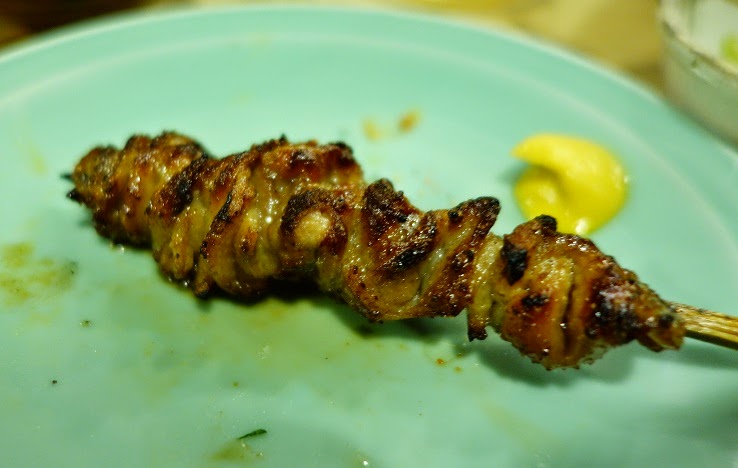Ginza is very famous for shopping and restaurants as an upscale town but also there are a lot of Yakitori restaurants available including the Michelin Guide star restaurant. Also I have many favorite restaurants in Ginza and one of best is "Takechan".
1. Takechan ( 武ちゃん )
I heard it was started the restaurant just after the 2nd world war from small house style (yatai,in Japanese). Still it is keeping authentic style and you can feel Japanese traditional atmosphere and enjoy the drinking and eating style there. The taste of Yakitori is very good with suitable seasoning and charcoal‐broiled for each .
Please order a course (JPY 2,200)of Yakitori which includes eight skewers with a cup of salad and a small cup of chicken soup.
The restaurant is small and unfortunately you can not have prior reservation. I recommend early or late time (around until 1800 or around 2000) but if it is occupied, you would not wait for so long time and could have seats soon because they serve quickly and a course would finish soon around 1 hour.
 |
| salad and radish with soy sauce |
 |
| Tsukune (chicken meat ball) and sasami (inner fillet of chicken ) |
 |
| Aigamo ( duck ) and liver |
 |
| chicken soup |
 |
| Hatsu ( heart of chicken ) |
 |
| Negima ( chicken thigh and spring onion) |
 |
| Tebasaki ( chicken wing ) |
 |
| Ginnan ( ginkgo nuts ) |
 |
| Oshinko ( Japanese pickles (optional) ) |
Address: 1st floor of Ginza kaniboku kaikan building, 4-8-13 Ginza Chuo-ku, Tokyo
Telephone:+81-(0)3-3561-6889 ( prior reservation is not available)
Close train station:
5min. walk from Higashi ginza station, Asakusa-line, Tokyo toei metro
8min. walk from Ginza station, Ginza-line, Hibiya-line, Tokyo metro of Yurakusho station, JR line
Open from 1700 to 2130
Close on Sunday and national holiday
Credit card is not acceptable

















